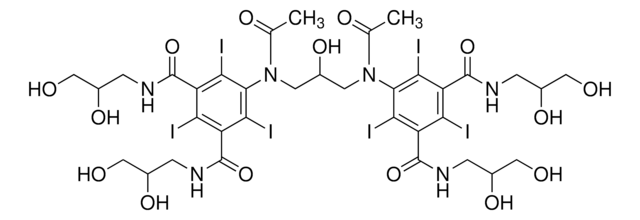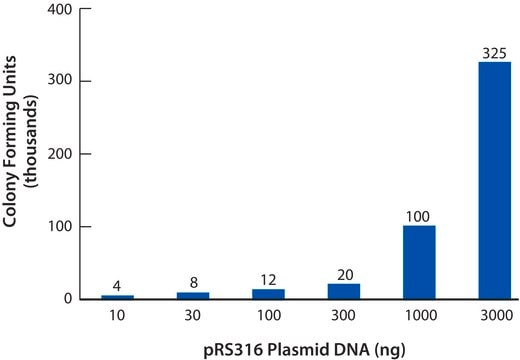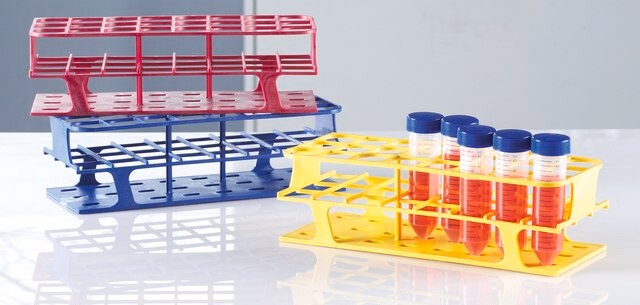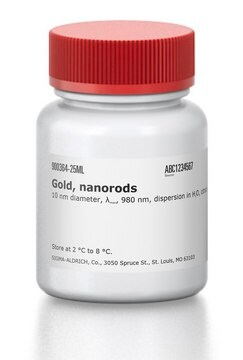C4616
Anti-Calcium Channel CaV3.3 (α1I) antibody produced in rabbit
affinity isolated antibody, lyophilized powder
Iniciar sesiónpara Ver la Fijación de precios por contrato y de la organización
About This Item
Productos recomendados
biological source
rabbit
Quality Level
conjugate
unconjugated
antibody form
affinity isolated antibody
antibody product type
primary antibodies
clone
polyclonal
form
lyophilized powder
species reactivity
rat
technique(s)
western blot: 1:200 using rat brain membranes
UniProt accession no.
shipped in
dry ice
storage temp.
−20°C
target post-translational modification
unmodified
Gene Information
human ... CACNA1I(8911)
rat ... Cacna1i(56827)
General description
Calcium channel CaV3.3 (α1I) is a low-voltage-activated T-type calcium channel. CaV3.3 (α1I) transcripts are detected in central nervous system as well as thyroid and adrenal glands.
Immunogen
peptide corresponding to amino acid residues 1053-1067 of rat CaV3.3. Homology with other species: human is 14/15 residues identical.
Application
Anti-Calcium Channel CaV3.3 (a1I) antibody produced in rabbit is suitable for western blot at a dilution of 1:200 using rat brain membranes.
Biochem/physiol Actions
Calcium channel CaV3.3 (α1I) is involved in neuronal excitability and is particularly recruited during the depolarizing after-potential. It is responsible for generating sustained electrical activity. Sperm specific proteins CatSper1 and CatSper2 interact with Cav3.3 and suppress Cav3.3-evoked T-type calcium channel activity.
Physical form
Lyophilized from phosphate buffered saline, pH 7.4, containing 1% bovine serum albumin and 0.05% sodium azide.
Disclaimer
Unless otherwise stated in our catalog or other company documentation accompanying the product(s), our products are intended for research use only and are not to be used for any other purpose, which includes but is not limited to, unauthorized commercial uses, in vitro diagnostic uses, ex vivo or in vivo therapeutic uses or any type of consumption or application to humans or animals.
¿No encuentra el producto adecuado?
Pruebe nuestro Herramienta de selección de productos.
Storage Class
11 - Combustible Solids
wgk_germany
WGK 2
flash_point_f
Not applicable
flash_point_c
Not applicable
Elija entre una de las versiones más recientes:
¿Ya tiene este producto?
Encuentre la documentación para los productos que ha comprado recientemente en la Biblioteca de documentos.
Edward Perez-Reyes
Physiological reviews, 83(1), 117-161 (2002-12-31)
T-type Ca2+ channels were originally called low-voltage-activated (LVA) channels because they can be activated by small depolarizations of the plasma membrane. In many neurons Ca2+ influx through LVA channels triggers low-threshold spikes, which in turn triggers a burst of action
Jin-Yong Park et al.
The Journal of biological chemistry, 279(21), 21707-21713 (2004-03-16)
Molecular cloning and expression studies established the existence of three T-type Ca(2+) channel (Ca(v)3) alpha(1) subunits: Ca(v)3.1 (alpha(1G)), Ca(v)3.2 (alpha(1H)), and Ca(v)3.3 (alpha(1I)). Although all three channels are low voltage-activated, they display considerable differences in their kinetics, with Ca(v)3.1 and
Jean Chemin et al.
The Journal of physiology, 540(Pt 1), 3-14 (2002-04-03)
In several types of neurons, firing is an intrinsic property produced by specific classes of ion channels. Low-voltage-activated T-type calcium channels (T-channels), which activate with small membrane depolarizations, can generate burst firing and pacemaker activity. Here we have investigated the
Association of Catsper1 or -2 with Ca(v)3.3 leads to suppression of T-type calcium channel activity.
Di Zhang et al.
The Journal of biological chemistry, 281(31), 22332-22341 (2006-06-03)
Sperm-specific CatSper1 and CatSper2 proteins are critical to sperm-hyperactivated motility and male fertility. Although architecturally resembling voltage-gated ion channels, neither CatSper1 nor CatSper2 alone forms functional ion channels in heterologous expression systems, which may be related to the absence of
Nuestro equipo de científicos tiene experiencia en todas las áreas de investigación: Ciencias de la vida, Ciencia de los materiales, Síntesis química, Cromatografía, Analítica y muchas otras.
Póngase en contacto con el Servicio técnico








